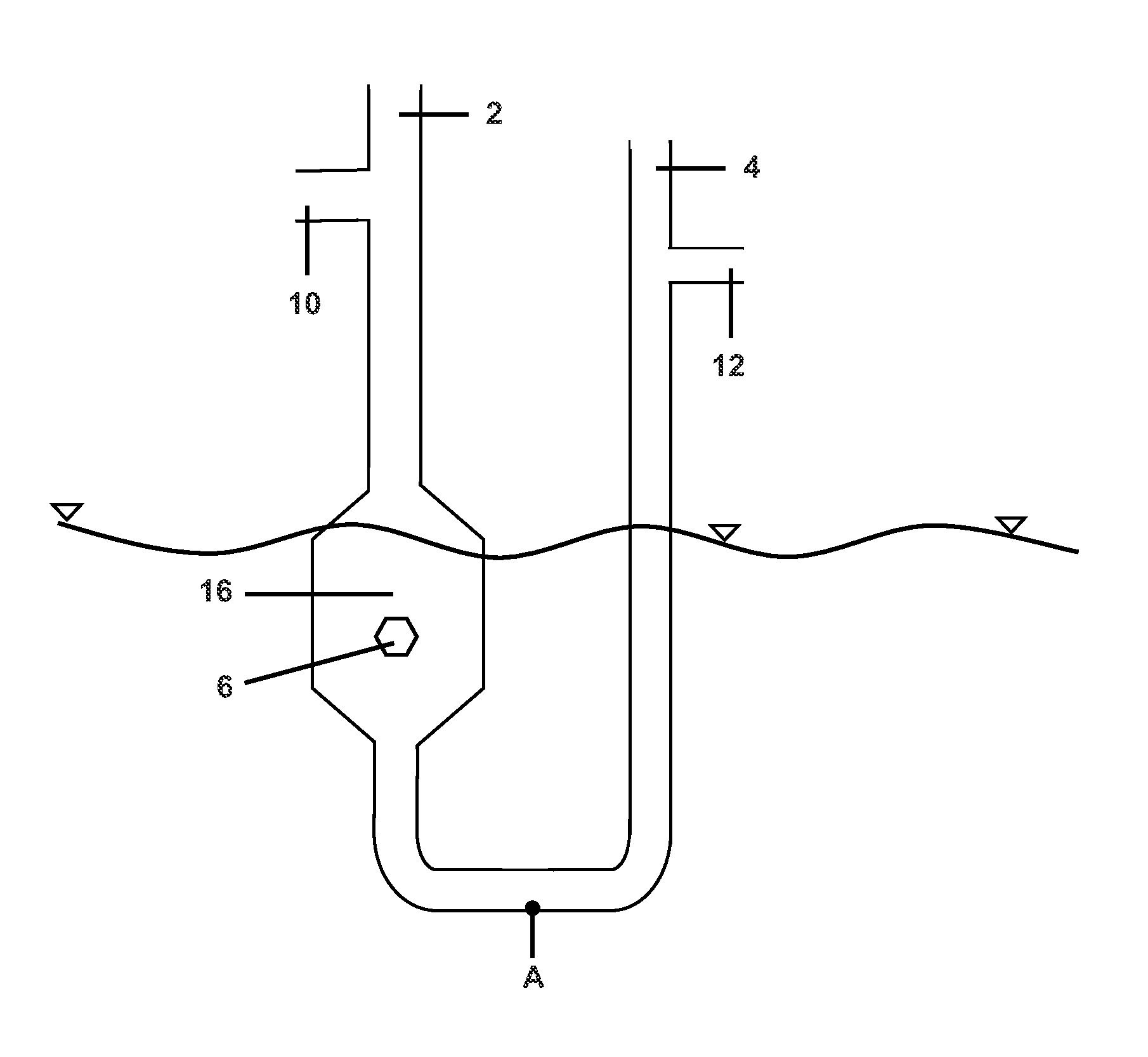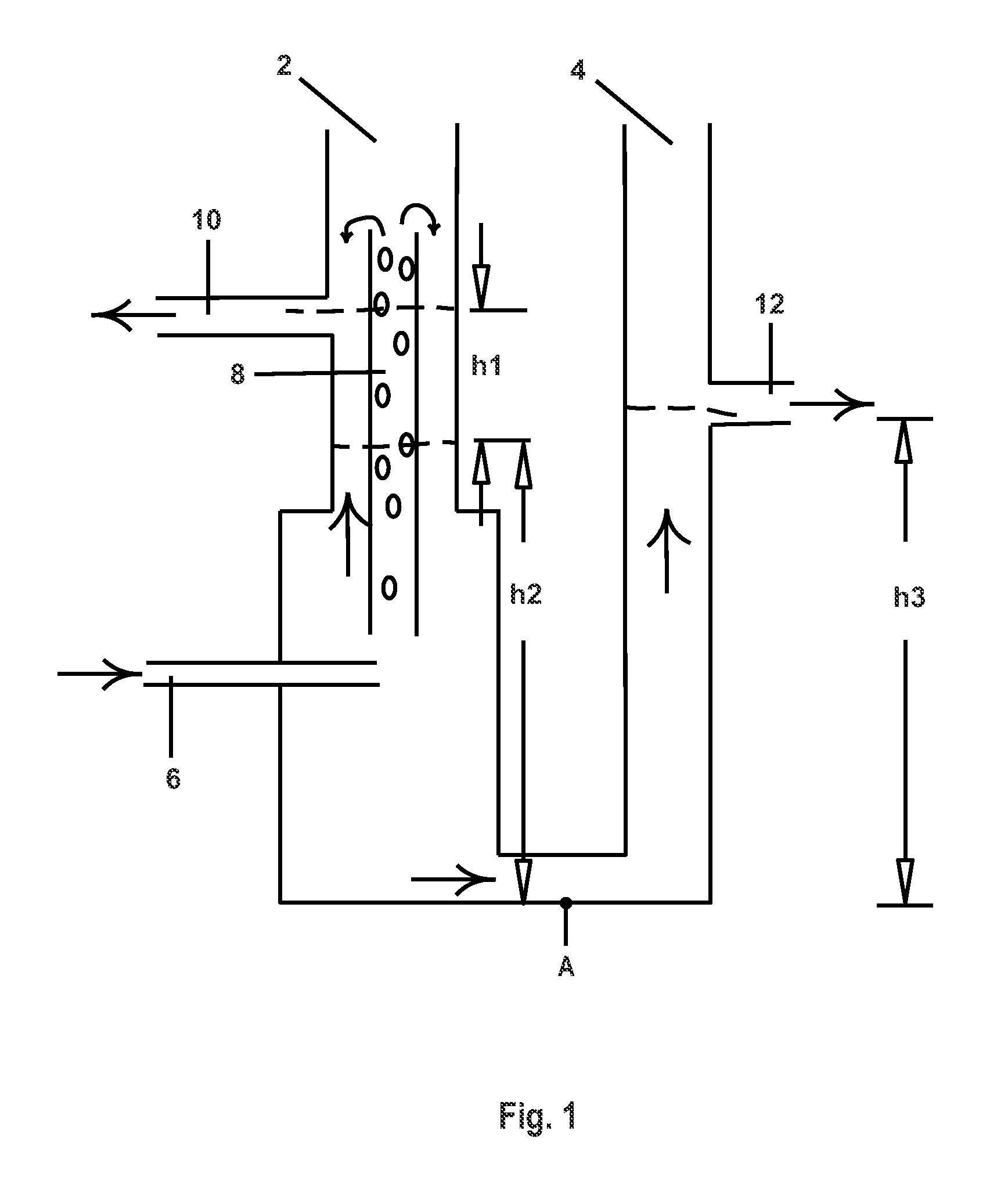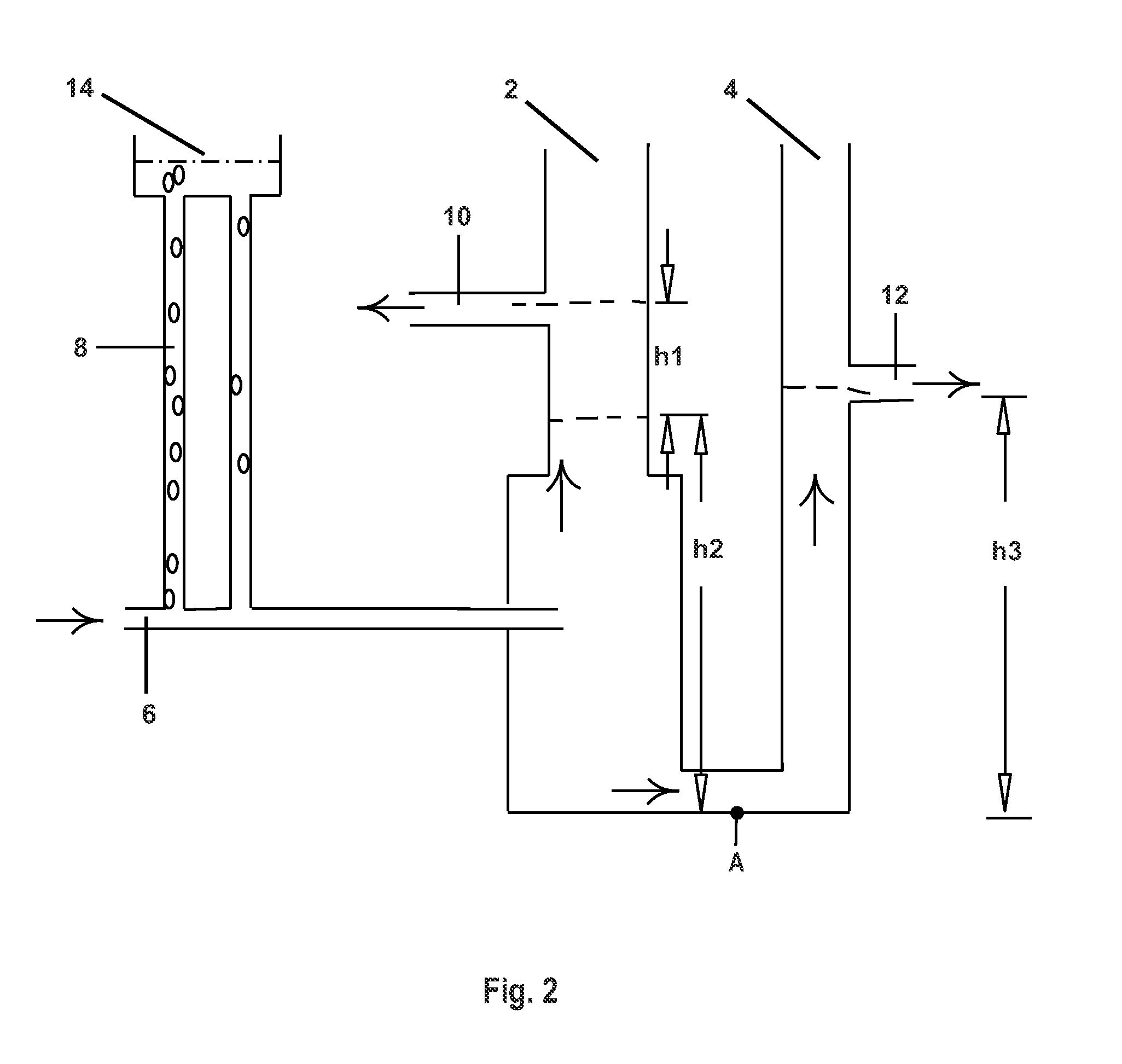Oil—water separator
a technology of oil and water separator, which is applied in the direction of water cleaning, separation process, chemical apparatus and process, etc., can solve the problems of slowing down the ascent speed of oil droplets in the left limb, undesirable shear, etc., and achieves relatively rapid and efficient separation, reduce the formation of emulsions, and facilitate separation. rapid and easy
- Summary
- Abstract
- Description
- Claims
- Application Information
AI Technical Summary
Benefits of technology
Problems solved by technology
Method used
Image
Examples
Embodiment Construction
[0019]Looking for example at FIG. 1, in one embodiment a separator in accordance with the invention may be thought of as having a configuration generally as that of a large U tube. At the point marked “A,” the pressure from the left limb 2 (ρoil×g×h1+ρH2O-mostly×g×h2) equals the pressure from the right limb 4 (ρH2O×g×h3). The Greek letter ρ denotes the density of the particular fluid. The density of oil is less than the density of water (whether fresh or salt water). The invention exploits this difference in density to separate the oil and water between the two limbs 2 and 4, and to collect the oil and the water from two different ports, 10 and 12, respectively. The oil-out port 10 on the left limb 2 is higher than the water-out port 12 on the right limb 4. Therefore, oil exits the oil-out port 10 only when the height of the oil layer in the left limb (h1) is sufficient to reach the oil-out port 10. Air or other gases in the intake may escape as bubbles through an optional inner tub...
PUM
| Property | Measurement | Unit |
|---|---|---|
| Reynolds number | aaaaa | aaaaa |
| Reynolds number | aaaaa | aaaaa |
| height | aaaaa | aaaaa |
Abstract
Description
Claims
Application Information
 Login to View More
Login to View More - R&D
- Intellectual Property
- Life Sciences
- Materials
- Tech Scout
- Unparalleled Data Quality
- Higher Quality Content
- 60% Fewer Hallucinations
Browse by: Latest US Patents, China's latest patents, Technical Efficacy Thesaurus, Application Domain, Technology Topic, Popular Technical Reports.
© 2025 PatSnap. All rights reserved.Legal|Privacy policy|Modern Slavery Act Transparency Statement|Sitemap|About US| Contact US: help@patsnap.com



